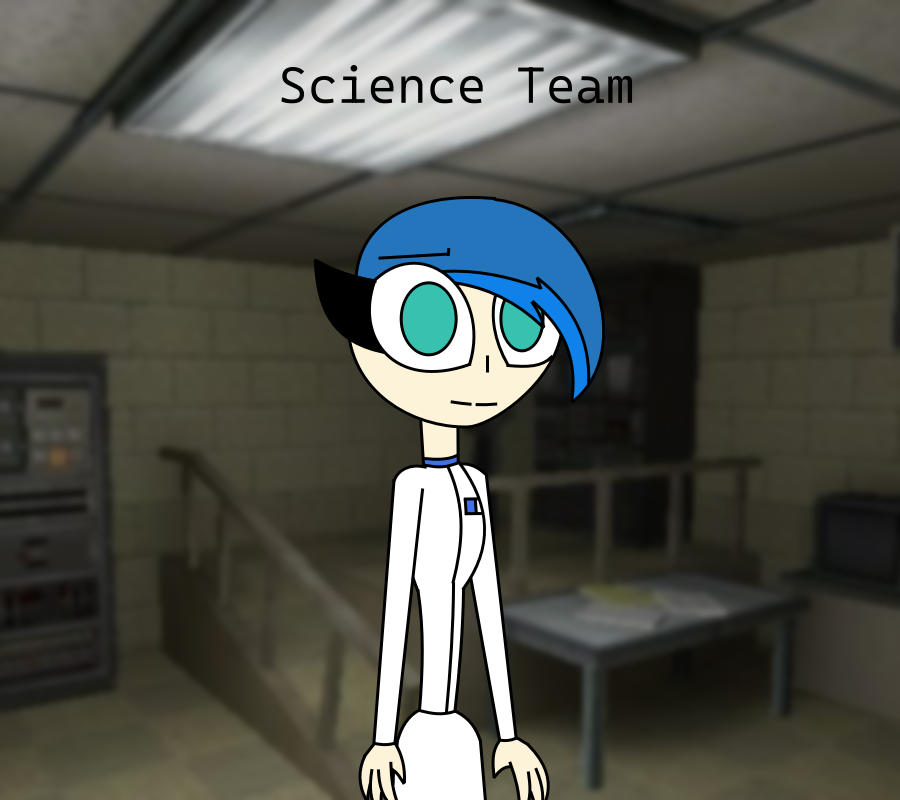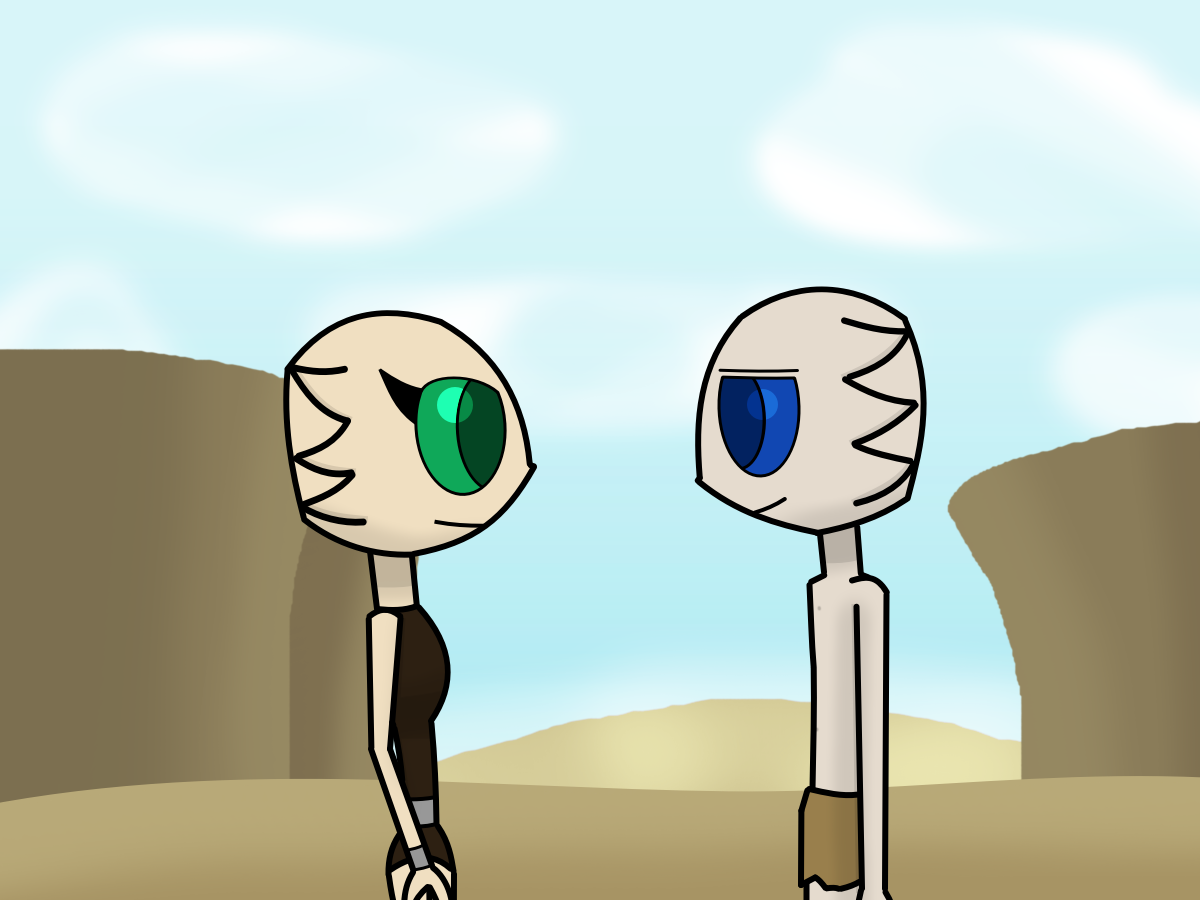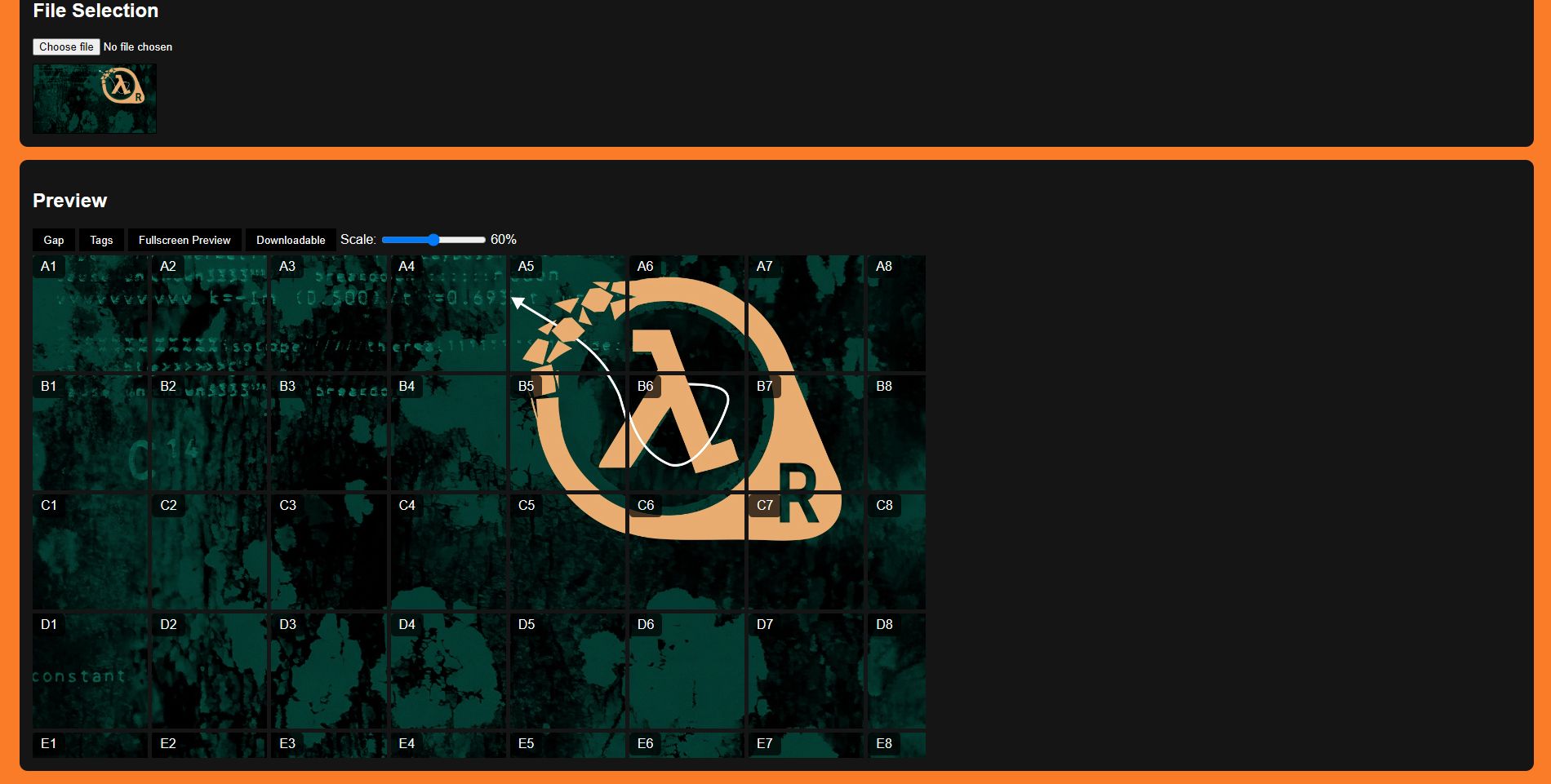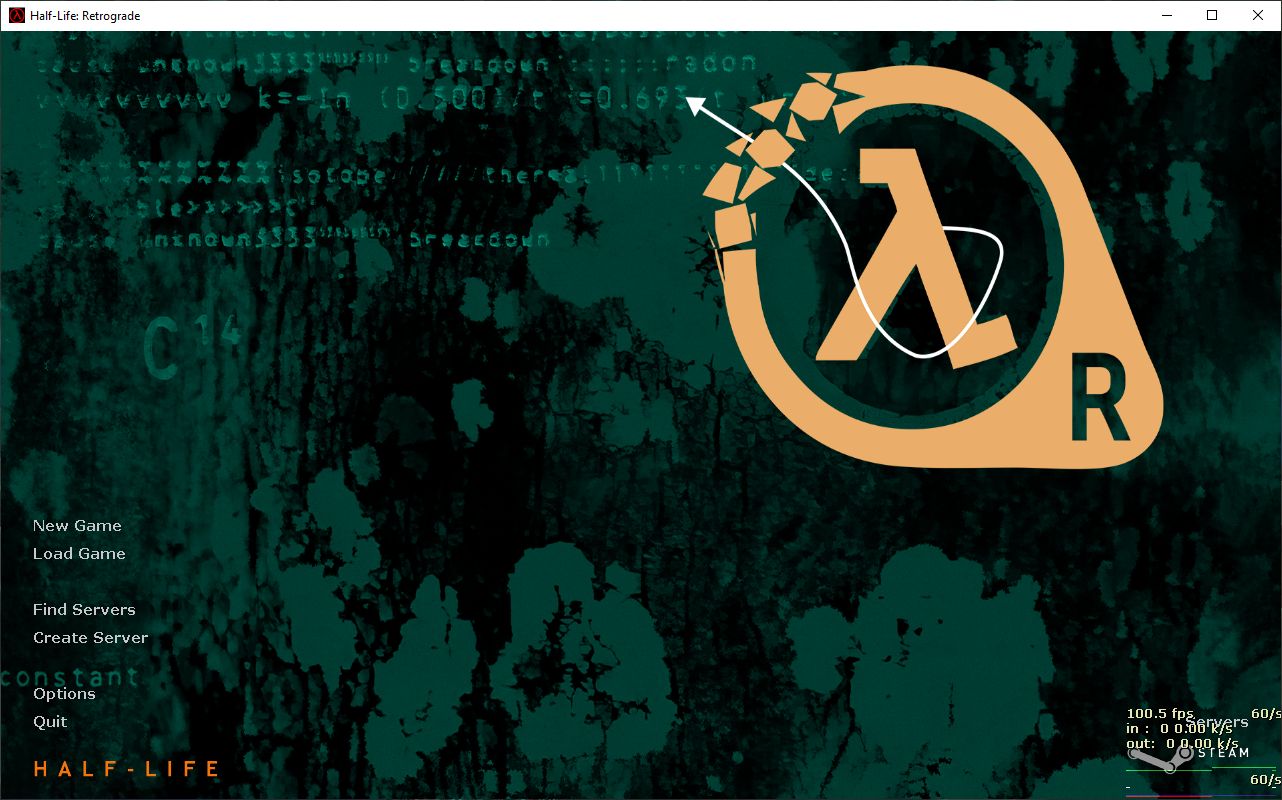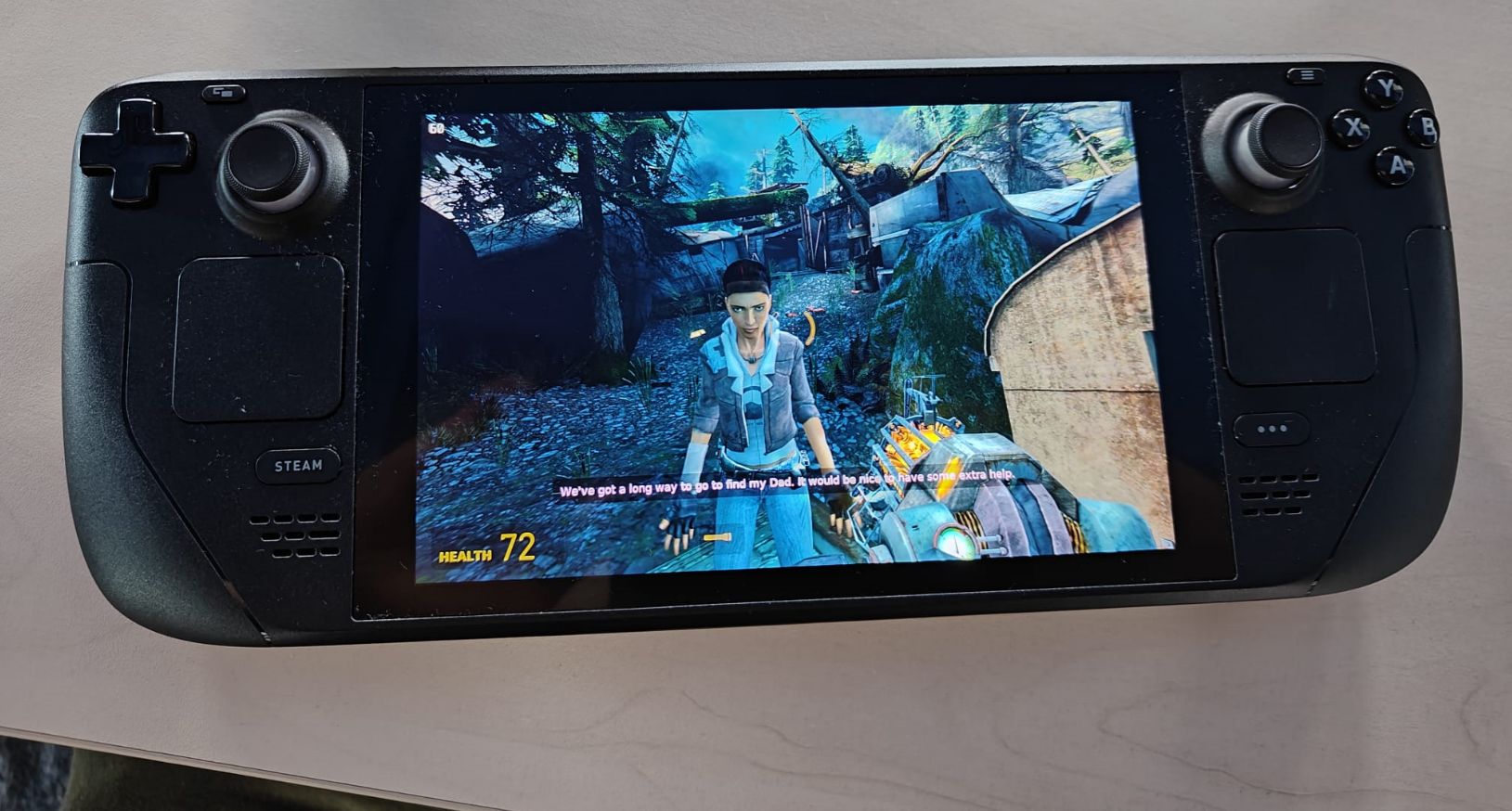Journals
This is Neeh.
She's a scientist. The style is based of an old friend's art style. That friend is unfortunately not my friend anymore from awhile ago.
I've finished my first big complex map. I began making it on July 22nd, with the goal of finishing it before August. I think it's a good sign of progress since I first started making maps for goldsource around 3 or 4 months ago.
It's just the first map of We've Got Hostiles, except each room has its own custom "Jeffrey" variant.
It's just the first map of We've Got Hostiles, except each room has its own custom "Jeffrey" variant.
I'm looking for Iranians to play with and possibly collaborate with on projects. If you're Iranian or know of any, please reach out.
tags: iran iranian persian persia farsi
tags: iran iranian persian persia farsi
Posting a drawing!
For those of us enjoying modding GoldSRC the background image on the main menu is certainly a nice little reward each time you boot your mod up. Really gives it that proper mod feel.
Well, I wanted to do that again, but I didn't have to to go through the pain of splicing up an image, so I decided to spend more time programming something to help me do it than to just do it again every time I needed to make an edit. Saves me some time converting all the files!
And here we have it: GoldSRC Steam Background Image Converter.
This tool is based on the Tutorial: How to Make HD 1080p Backgrounds for HL1/Goldsrc Games. Big shout out to MrFloyd76
You'll need the config files from that tutorial, but it saves you much time in cropping / splicing your images.
The main benefit of this is that you can use any file format your browser supports, bust most importantly: bmp, jpg, png, and even SVG without having to download any third party files. Technically you can use gifs, but the first frame (though not sure why you'd want to do that!).
Well, I wanted to do that again, but I didn't have to to go through the pain of splicing up an image, so I decided to spend more time programming something to help me do it than to just do it again every time I needed to make an edit. Saves me some time converting all the files!
And here we have it: GoldSRC Steam Background Image Converter.
This tool is based on the Tutorial: How to Make HD 1080p Backgrounds for HL1/Goldsrc Games. Big shout out to MrFloyd76
You'll need the config files from that tutorial, but it saves you much time in cropping / splicing your images.
The main benefit of this is that you can use any file format your browser supports, bust most importantly: bmp, jpg, png, and even SVG without having to download any third party files. Technically you can use gifs, but the first frame (though not sure why you'd want to do that!).
For now, the tool is set to output at 1920 x 1080, in sets of 256 x 256px,* uncompressed 24-bit TGA images*.Loaded into the tool. In-Game
Your input images should be 1920 x 1080px.
Once you've loaded the image click each of the images to download each tga.
Finally, after one year of development I've finally gotten Map2Prop to a state that I can call the first official release! 🥳
Especially the last week of development was tough. Been having what feels like might be another case of the covid. So many thanks to Kimilil for testing the release candidates and helping me add in a few extra useful and expected features, and for finding a bug that led me to discover a problem with the vertex sorting function I had not noticed before. 🙏
Many sincere thanks to everyone who has helped me out, given feedback, and made cool stuff with Map2Prop during the pre-release stage. I hope it continues to be helpful to you mappers out there!
This is of course not the end of its development. I still have more features on the todo list, and there's likely some pesky bugs still hiding out somewhere. I'm just finally able to call it a proper app and no longer a simple prototype.
Also, the Vault Item description needs to be updated, and so does the documentation site. Will have to take care of those in the weekend, I'm too tired for that tonight and I need to get some rest.
Again, thank you all.
Especially the last week of development was tough. Been having what feels like might be another case of the covid. So many thanks to Kimilil for testing the release candidates and helping me add in a few extra useful and expected features, and for finding a bug that led me to discover a problem with the vertex sorting function I had not noticed before. 🙏
Many sincere thanks to everyone who has helped me out, given feedback, and made cool stuff with Map2Prop during the pre-release stage. I hope it continues to be helpful to you mappers out there!
This is of course not the end of its development. I still have more features on the todo list, and there's likely some pesky bugs still hiding out somewhere. I'm just finally able to call it a proper app and no longer a simple prototype.
Also, the Vault Item description needs to be updated, and so does the documentation site. Will have to take care of those in the weekend, I'm too tired for that tonight and I need to get some rest.
Again, thank you all.
In order to escape from the hell that is medical bureaucracy, I'm making yet another attempt to return to level design. After deciding that all my passion projects are more ambitious than I can currently manage, I figured I'd start with something smaller, and I decided something with challenging puzzles would be a cool map.
Which raises the problem of puzzle design in Half-Life².
The campaign doesn't have that problem: people playing it for the first time are usually new to the game, so the challenge is figuring out what the puzzle actually is and learn the design language: blue barrels float, wooden beams can be broken, gas canisters can detonate, etc. A battery can be carried around to be plugged in.
For any sort of seasoned HL2 player, that's not a challenge. They know the usual puzzles and the design language, and most of the usual puzzles have become mere chores. Carry A to B, stack X on Y, put L under M to lift it up. The "bring A to B" is the most basic form of puzzle and usually results in copious backtracking and can make the player feel like an errand boy.
So what I want are three things:
Elaborate physics puzzles are one possible approach. Those either are too obvious ("a wooden beam supporting a precariously balanced ramp that I could blow up and walk down? how convenient!") or too elaborate ("what am I supposed to do, build a pulley?!").
Circuitry puzzles à la Portal seem more promising, but teaching the player an entirely new design language may take more time than a single map can accomplish.
Number locks are simply trial and error.
I keep thinking about it, but it's hard coming up with enough learnable, challenging, non-menial puzzles to fill a map.
Which raises the problem of puzzle design in Half-Life².
The campaign doesn't have that problem: people playing it for the first time are usually new to the game, so the challenge is figuring out what the puzzle actually is and learn the design language: blue barrels float, wooden beams can be broken, gas canisters can detonate, etc. A battery can be carried around to be plugged in.
For any sort of seasoned HL2 player, that's not a challenge. They know the usual puzzles and the design language, and most of the usual puzzles have become mere chores. Carry A to B, stack X on Y, put L under M to lift it up. The "bring A to B" is the most basic form of puzzle and usually results in copious backtracking and can make the player feel like an errand boy.
So what I want are three things:
- puzzles that are challenging, in that the solution has to be deduced by the player
- puzzles that aren't menial, in that the execution is trivial and doesn't amount to pointless labour
- puzzles that are learnable, in that players don't get frustrated and feel like they were set up to fail
Elaborate physics puzzles are one possible approach. Those either are too obvious ("a wooden beam supporting a precariously balanced ramp that I could blow up and walk down? how convenient!") or too elaborate ("what am I supposed to do, build a pulley?!").
Circuitry puzzles à la Portal seem more promising, but teaching the player an entirely new design language may take more time than a single map can accomplish.
Number locks are simply trial and error.
I keep thinking about it, but it's hard coming up with enough learnable, challenging, non-menial puzzles to fill a map.
Our little blue ball a round and a round it goes , with each full cycle our grays it shows. 32th.
Compelled by the discord's discourse, here's the periodic table of elements
And here's the periodic table of ElementsSrc™
I might have an undiagnosed acoustic problem.
Finally got enough money to build my new PC, with a brand new powerful GPU. I can, finally, run the latest version of blender without having to hear the fans go nuclear.
A colleague of mine has the Steam deck so I've asked him to let me try some classics...
Hello everyone, I just wanted to inform you that the reason Pathos updates have been so dry and that I haven't been around, is that I've been dealing with health problems as of late. I had a gastrointestinal infection that, coupled with my autoimmune liver disease, has wrecked my health for the past 2 weeks. I've been mostly away due to not feeling well and needing to(slowly) heal. Once I am better I will be more active. Hope you are all doing fine, and I'll see you around.
That's another thing that's hard: limiting the space the player can move in. It's easy if the level is indoors, all corridors, like Nova Prospekt or the likes: just lock the doors. Nature's limit on level size.
But outdoors? It's hard to put impassable barriers anywhere without making the gameplay feel stilted, awkward, forced. Artificial.
You're in a part of the city where every exit has conveniently been blocked by collapsed buildings? That doesn't make sense, then how did you get in there, and how is Gordon gonna get out there once the screen fades to black?
Or put up traffic cones and riot barriers and cover them in toolsinvis? That's even worse. Gordon can shoot down helicopters, but a traffic cone is enough to stop him? Nah.
Separating the playable environment from the backdrop that's just there to liven up the scenery is pretty hard, at least in my experience. Guiding the player naturally, so they try to go down routes they can't as little as possible and can tell easily where they are supposed to be and where not is even harder. Campaign maps don't have this problem; each level transitions into the next, so the questions of entrance and exit are already answered, and having only the exit ramps blocked while the highway remains open is much more plausible than walling the player in on all sides. But standalone maps have to have a beginning and end that makes sense (at least that's what I want for mine), and that's tough.
I haven't really found a good answer for it yet. Entrances are easier than exits – just some drops that the player can't climb back up –, but it's something I struggle with immensely (and the way my brain works, I can't get to work on the rest of the map until I've solved that problem – it sucks, really).
But outdoors? It's hard to put impassable barriers anywhere without making the gameplay feel stilted, awkward, forced. Artificial.
You're in a part of the city where every exit has conveniently been blocked by collapsed buildings? That doesn't make sense, then how did you get in there, and how is Gordon gonna get out there once the screen fades to black?
Or put up traffic cones and riot barriers and cover them in toolsinvis? That's even worse. Gordon can shoot down helicopters, but a traffic cone is enough to stop him? Nah.
Separating the playable environment from the backdrop that's just there to liven up the scenery is pretty hard, at least in my experience. Guiding the player naturally, so they try to go down routes they can't as little as possible and can tell easily where they are supposed to be and where not is even harder. Campaign maps don't have this problem; each level transitions into the next, so the questions of entrance and exit are already answered, and having only the exit ramps blocked while the highway remains open is much more plausible than walling the player in on all sides. But standalone maps have to have a beginning and end that makes sense (at least that's what I want for mine), and that's tough.
I haven't really found a good answer for it yet. Entrances are easier than exits – just some drops that the player can't climb back up –, but it's something I struggle with immensely (and the way my brain works, I can't get to work on the rest of the map until I've solved that problem – it sucks, really).
it has new story, new charactors, betrayl, freindship, and death.


